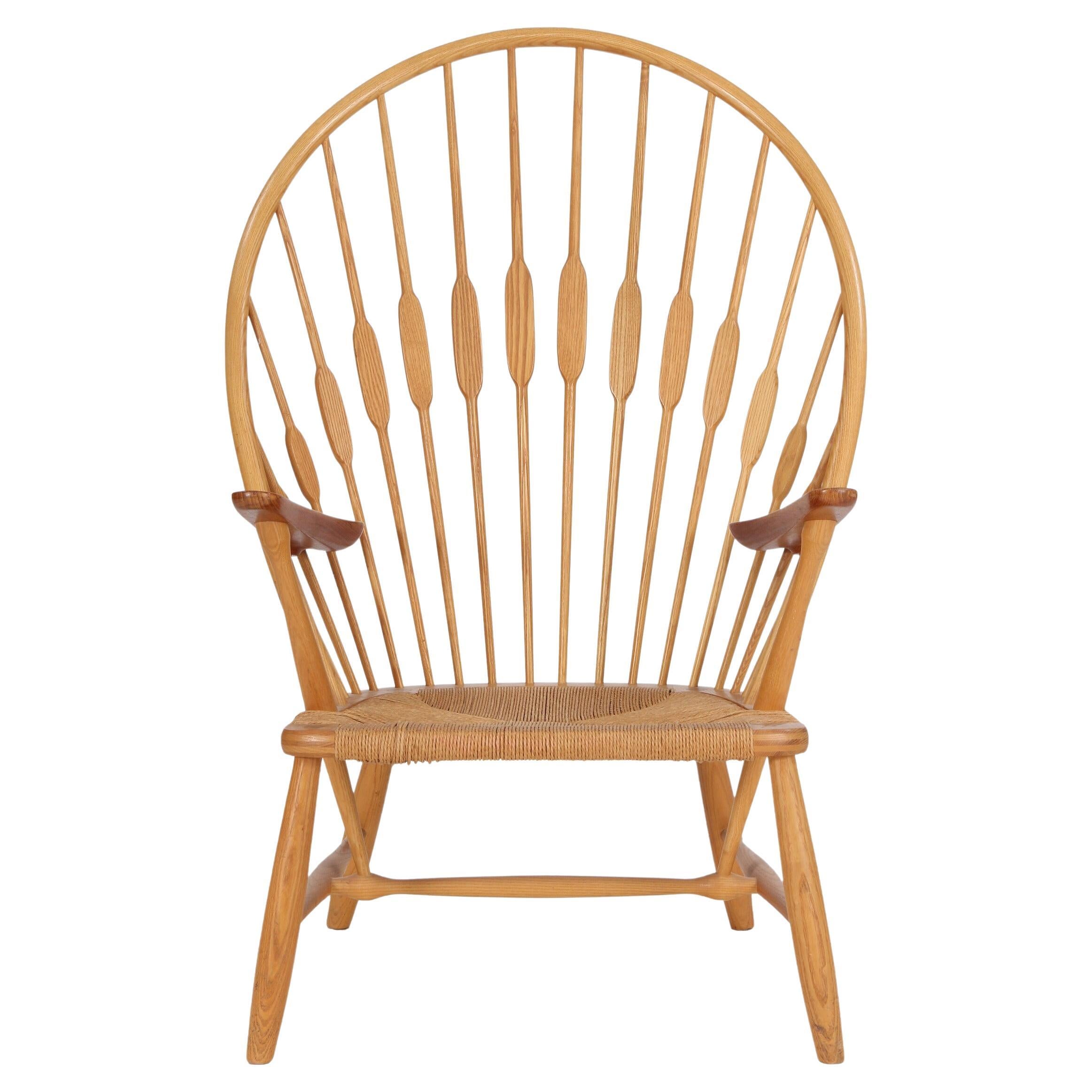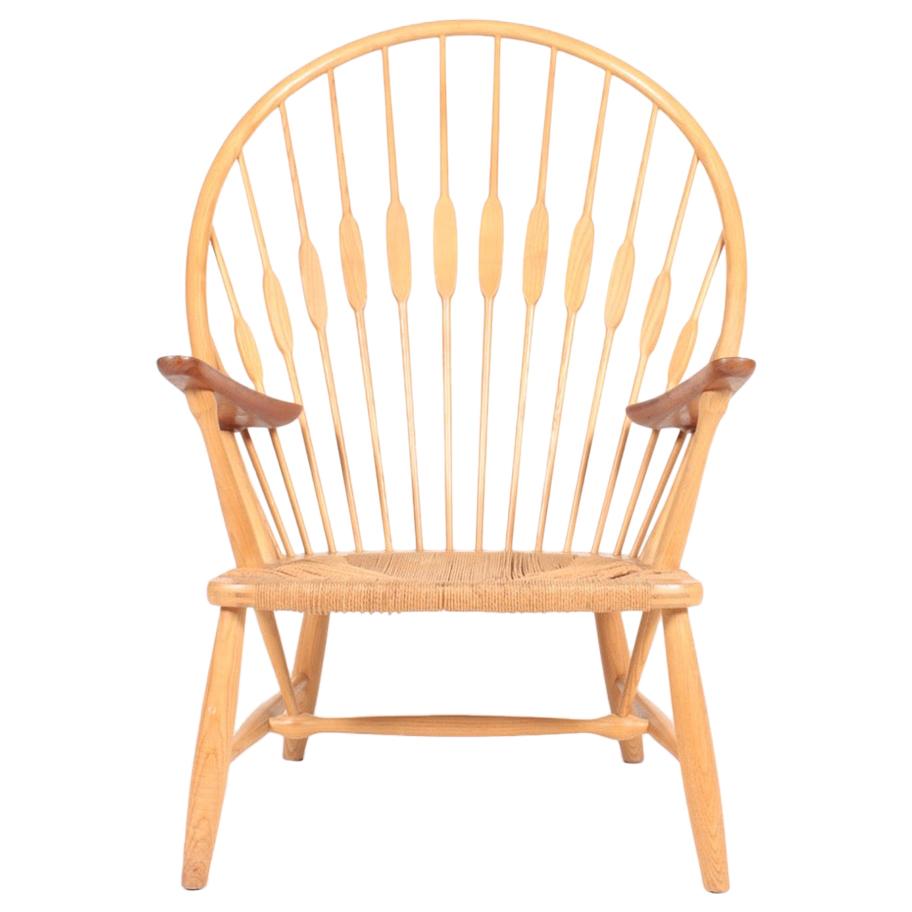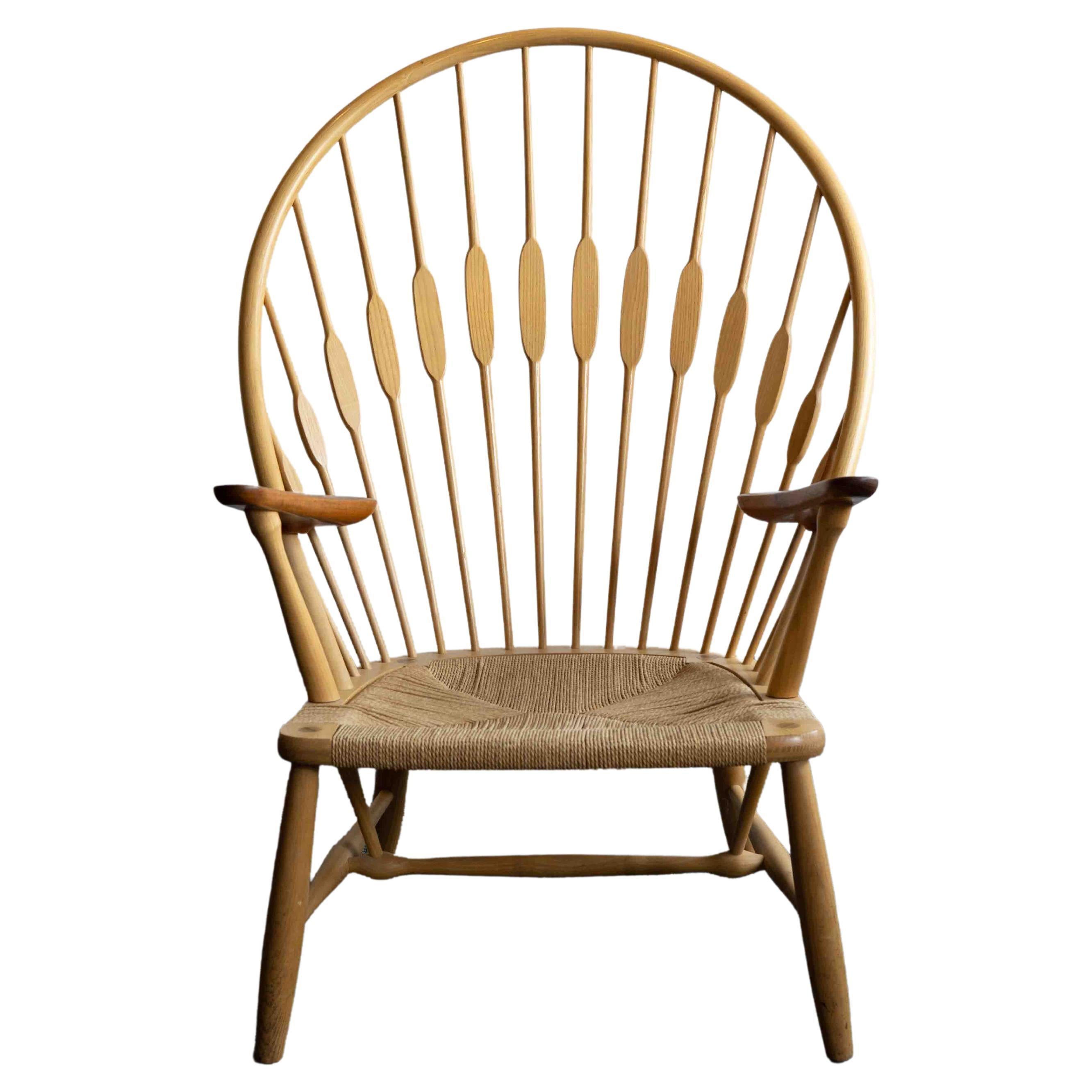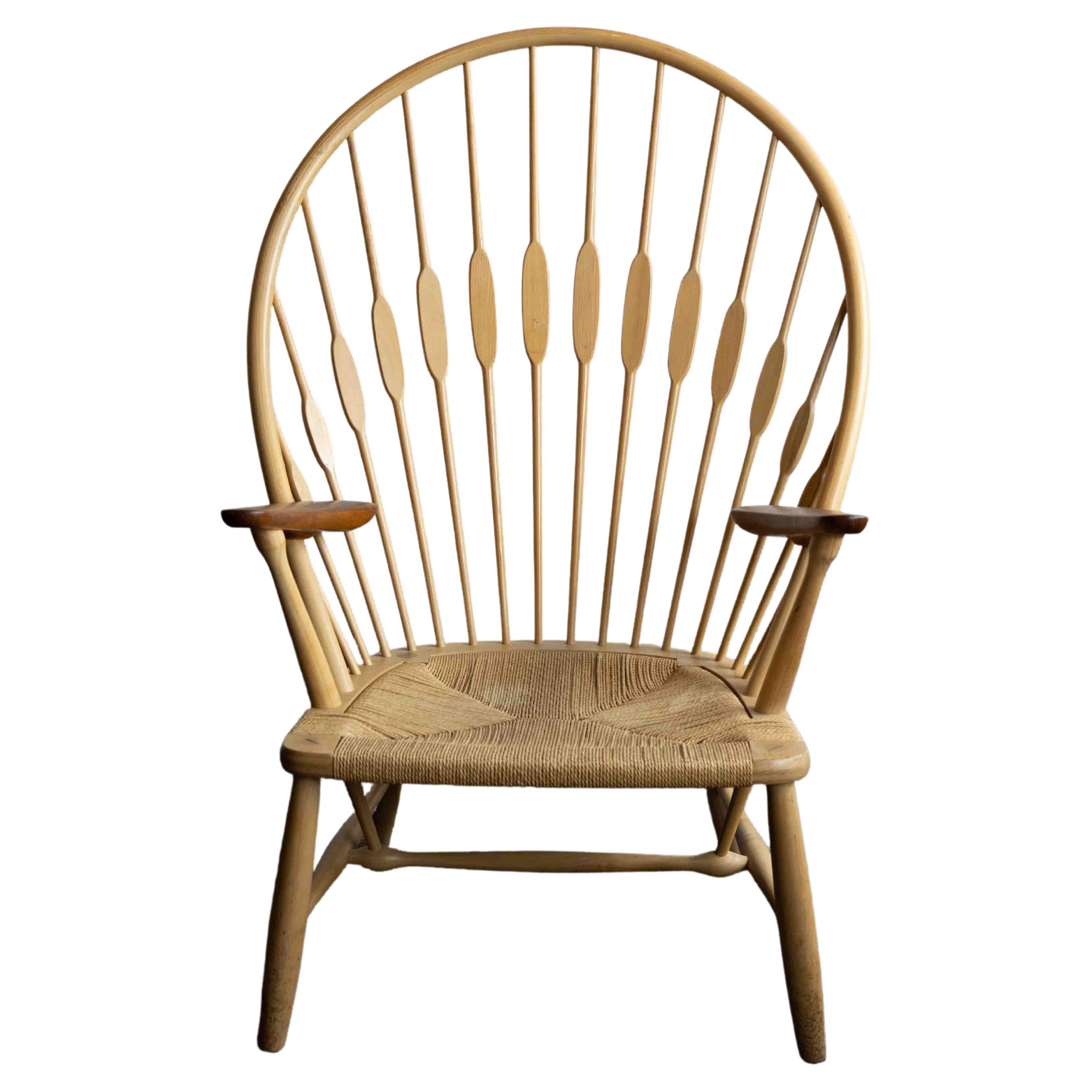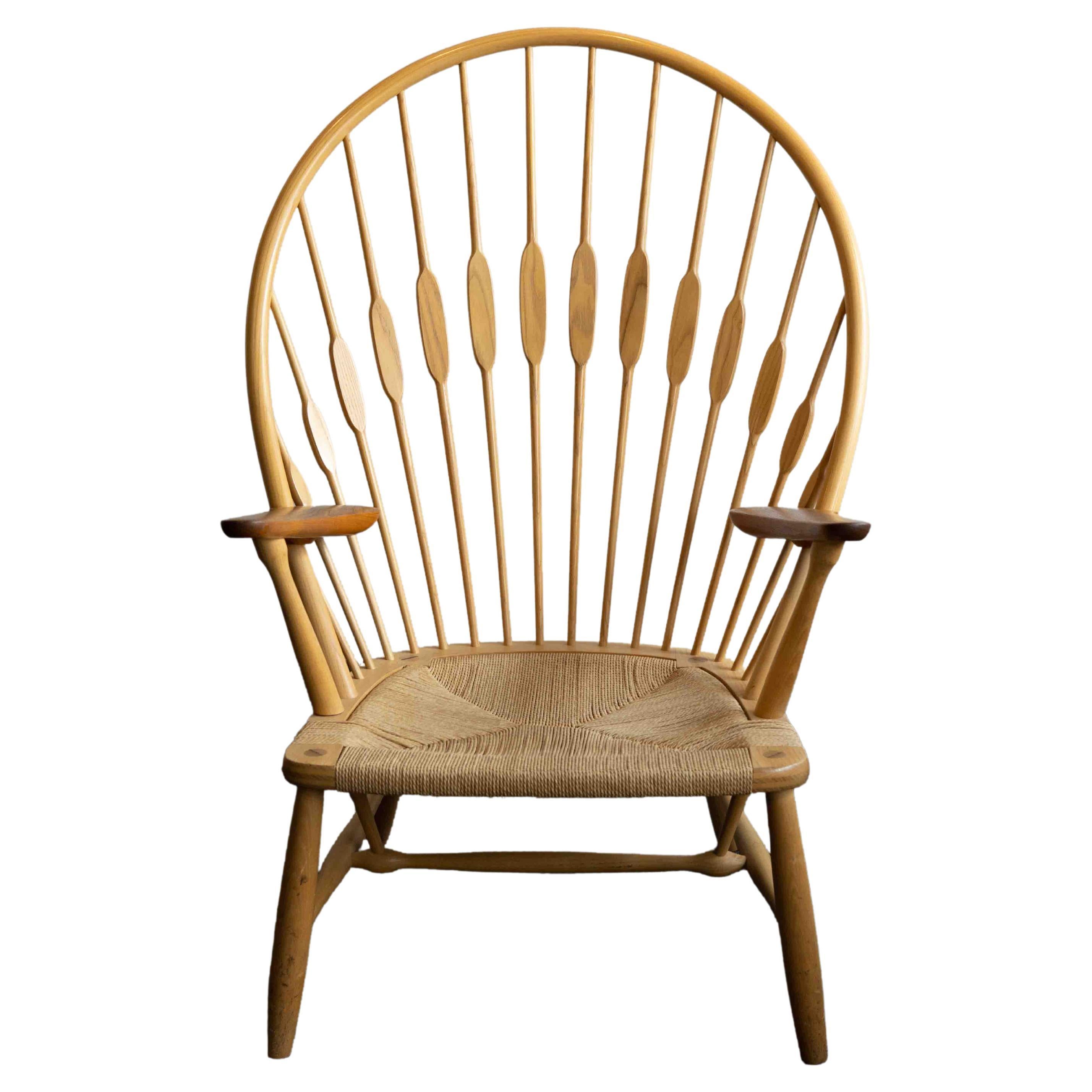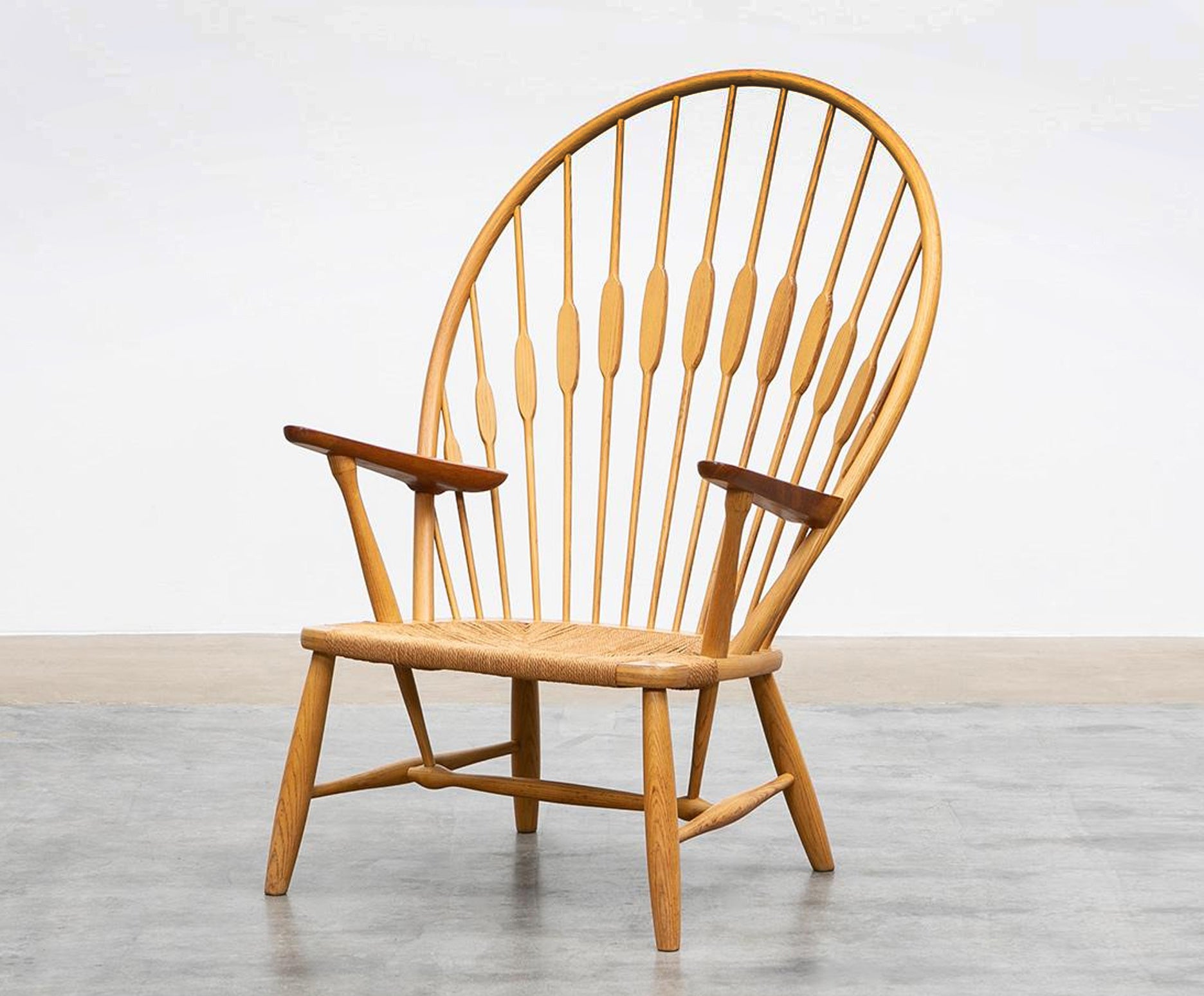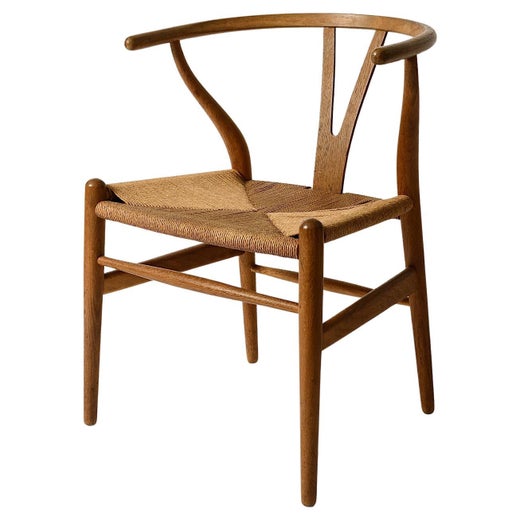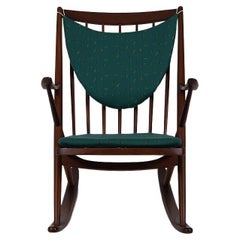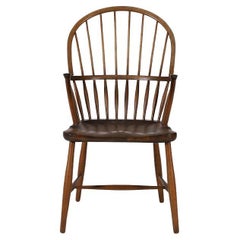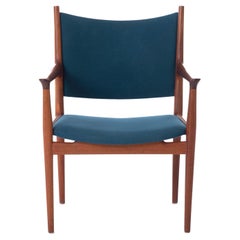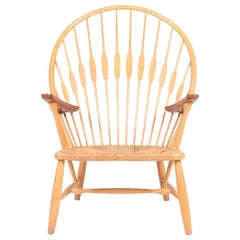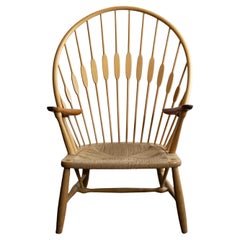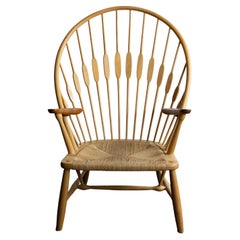Hans J. Wegner Peacock Lounge Chair
About the Item
- Creator:Hans J. Wegner (Designer),Johannes Hansen (Cabinetmaker)
- Design:
- Dimensions:Height: 42.5 in (107.95 cm)Width: 30 in (76.2 cm)Depth: 25 in (63.5 cm)
- Style:Scandinavian Modern (Of the Period)
- Materials and Techniques:
- Place of Origin:
- Period:
- Date of Manufacture:1960s
- Condition:Wear consistent with age and use. Chair will recieve a full cleanup, joint work and oiling upon purchase.
- Seller Location:Minneapolis, MN
- Reference Number:Seller: 54871stDibs: LU1527232070912
Peacock Chair
Not long before he debuted both “The Chair” — the ingeniously, appropriately named piece that exemplifies his dedication to purified form — and the revered and now oft-imitated Wishbone chair, Danish furniture designer Hans Wegner (1914–2007) released the Peacock chair, a gracefully arching, high-backed seat produced for manufacturer Johannes Hansen in 1947.
Although certain elements of this Wegner design — a woven seat, shapely wooden frame, graceful form — would go on to become nearly synonymous with Danish mid-century furniture, the Peacock (official name: PP550) has roots in another design tradition: the Windsor chair. Recognized by its arched frame and spindle back, the Windsor has long been associated with Amish woodworking communities in the United States, though its origin can be traced back to England and Wales. English settlers brought the seats stateside and they quickly gained popularity in North America, enduring through colonial times and into 20th-century American style.
But back to Denmark: While Wegner was a young student at the Royal Danish Academy of Fine Arts in Copenhagen (where he enrolled in 1936), he became involved with the Carpenters’ Guild Furniture Exhibits, which showed experimental designs by Danish architects and sparked Wegner’s own interest in playing with traditional notions of design in furniture. He became fascinated with a process of “stripping the old chairs of their outer style and letting them appear in their pure construction,” a method that would inform much of his most important work. Soon after experimenting with traditional Ming chairs in his China chair series, Wegner set his sights on the Windsor, which he adapted in subtle yet significant ways that exemplify his modernist ethos.
First, the flattening of the spindles in an arc to follow the posture of the sitter, a nod to the modern notion of designing around the human body. Then, the paper-cord seat, a precursor to the Wishbone in a material designed as a replacement for jute, which was in short supply following World War II. Finally, rendering the frame in ash, a common species in Denmark and a favorite wood among Scandinavian mid-century designers.
Legend has it that it was actually Wegner contemporary Finn Juhl — a celebrated designer and Copenhagen native — who saw the seat and proclaimed its resemblance to the showy bird, with the flattened spindles making up an arc of wood plumage. In any case, the name stuck, and PP Møbler continues to produce the Peacock chair under the moniker to this day.
Hans J. Wegner
Best known for his chairs and other seating pieces — though a master of many furniture types like sofas and tables — Hans Wegner was a prolific designer whose elegant, often ebullient, forms and devotion to the finest methods in joinery made "Danish Modern" a popular byword for stylish, well-made furniture in the mid-20th century.
Wegner considered himself a carpenter first and a furniture designer second. Like his peers Arne Jacobsen and Finn Juhl, Wegner believed that striking aesthetics in furniture were based on a foundation of practicality: a chair must be comfortable and sturdy before it is chic.
In keeping with that tenet, several of Hans Wegner’s best chair designs have their roots in traditional seating forms. The Peacock chair (designed in 1947) is a throne-like adaptation of the Windsor chair; pieces from the China chair series (begun in 1944) as well as the 1949 Wishbone chair, with its distinctive Y-shaped back splat, are derived from 17th-century Ming seating pieces, as is the upholstered Ox chair (1960). Wegner’s comfy Papa Bear chair (1951) is an almost surreally re-scaled English wingback chair.
Wegner’s most representative piece, the Round chair (1949), gained a footnote in political history when it was used on the TV stage of the first Kennedy-Nixon debate of 1960. That chair, along with Wegner’s more bravura designs — for example, the 1963 Shell chair, with its curved surfboard-shaped seat — bring a quietly sculptural presence to a room.
Wegner was a designer who revered his primary material — wood — and it shows. His wood gathers patina and character with age; every Hans Wegner piece testifies to the life it has led.
Find vintage Hans Wegner lounge chairs, armchairs, daybeds and other furniture for sale on 1stDibs.

- ShippingRetrieving quote...Shipping from: Minneapolis, MN
- Return Policy
More From This Seller
View AllMid-20th Century Danish Scandinavian Modern Rocking Chairs
Upholstery, Teak
Mid-20th Century Scandinavian Scandinavian Modern Rocking Chairs
Wool, Oak
Mid-20th Century Scandinavian Scandinavian Modern Chairs
Beech
Mid-20th Century Scandinavian Scandinavian Modern Armchairs
Wool, Teak
Mid-20th Century Scandinavian Scandinavian Modern Armchairs
Teak, Wenge
Mid-20th Century Scandinavian Scandinavian Modern Chairs
Upholstery, Beech
You May Also Like
Vintage 1960s European Scandinavian Modern Armchairs
Ash
Vintage 1950s Danish Scandinavian Modern Lounge Chairs
Ash, Teak
Mid-20th Century Danish Mid-Century Modern Chairs
Papercord, Ash, Teak
Mid-20th Century Danish Mid-Century Modern Chairs
Papercord, Ash, Teak
Mid-20th Century Danish Mid-Century Modern Chairs
Papercord, Ash, Teak
Mid-20th Century Danish Mid-Century Modern Chairs
Papercord, Ash, Teak
Read More
The 21 Most Popular Mid-Century Modern Chairs
You know the designs, now get the stories about how they came to be.
Design Icon Ilse Crawford on Her Colorful New Hans Wegner Chairs
If anyone is brave, humble and adept enough to recolor these mid-century masterpieces, it’s Ilse Crawford. Here, she gives us the details on her five earthy paint choices and tells us how she feels about design collaborations.
